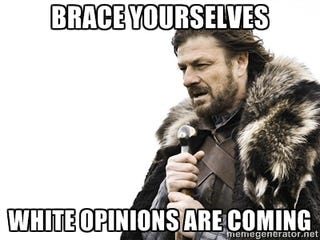Lisa Nakamura's text deals with (to use that handy little subtitle) "race, ethnicity, and identity on the internet" using her term cybertypes, which she defined as "the distinctive ways that the internet propagates, disseminates, and commodifies images of race and racism" (3). She states that her definition allows for a layering of the ideology of race in the non-virtual world with that of the computer and its influence on access, interaction, and expression. She argues against the assertion that we are "beyond race" on the web in all its Utopian promise, saying that we are certainly still under the same guidelines, cultural norms, and hegemonies that govern our "solid" selves (4). Her book certainly talks about issues of access in relation to this issue, but she also discusses the cybertying that occurs even when a significant number of minorities are able to use the web, including redlining (10) and the possibility of the internet mimicking the problems in television despite diverse viewership (28). Like Reed, she brings up a lack of minorities not only as consumers, but also as producers, and ends with talking about issues of access in the academic world. Overall, her chapters cover identity tourism and menu-driven, reductive identities, race and cyberpunk films, the myth of multiculturalism, and the way advertising perpetuates the view of the other as "clean" and "unspoiled".
I found Nakamura’s quote in the introduction about monocultures and what we consider contamination very interesting. She cites Saradar, who says that the cyberspace is a monoculture, and briefly talks about the discourse of bioengineering and agribusiness. In agriculture, monocultures often produce high yields, because practices can be standardized and the strain used is bred for disease resistance and, you guessed it, high yield. However, “the fashionables” (17) claim that monocultures reduce soil fertility over time, and disasters can occur if a novel disease is introduced. I’m not sure I quite understand her bitterness toward the opposition here if we are strictly speaking crops; however, she brings up interesting points: Do we have a monoculture? (*Nakamura raises hand*) What would be the “high yield” of monoculture on the web? Do we really care what the downfalls are, as long as we get what we want? What would a polyculture look like, and how would it be maintained? In the end, does it all come down to economics?
Nakamura then goes on to say, “…the tourist gaze would like to see [the African woman] out of time, protected from the incursions of digital “culture” (or monoculture) by Western intervention: the authenticity of the timeless primitive is threatened by the television set. In the second example, cultural appropriations are commonly celebrated as hybridity and assimilation” (17). She quickly explains that music allows for these mixings, but I was hoping to hear more. Would that newspaper article be different if the African woman was listening to an iPod? Furthermore, does this same dichotomy apply for the people using this technology? For example, what do the Filipino youth, the African woman, and the Chinese rock group think about the tools they are using? When I was in Guatemala this summer, several people I talked to blamed technology for the loss of their Mayan culture and identity. Our tour guide specifically spoke about how computers have Westernized the small town we lived in, causing women to trade their traditional dresses for skinny jeans and graphic t-shirts. He sounded nostalgic, sad, and resigned. However, I later learned that many families could no longer afford to put their children in the expensive, traditional dresses, which was why they had switched to the "Americanized" clothing, bringing up an issue that technology may mask. There is certainly a digital divide, but there is also a non-digital divide, and the cost of getting on the internet (less than 10 cents an hour) was certainly much lower than buying a dress (perhaps around $50 but up to hundreds of dollars). In addition, though he mourned the loss of that part of his culture, he also wore jeans and a t-shirt instead of the suit only worn by the oldest generation of men in the town. I wish I had been able to talk with more people about their views of technology, but, with my limited vocabulary, it was hard to get from "how are you?" to "Do cell phones and internet cafes affect the way you view your cultural identity?"
 |
Also, given my summer experience and the way I am still trying to make sense of it all, I found Nakamura's definition of identity tourism unsettling and disturbing. She claims, "Multiply distributed identities allow identity tourists to simultaneously claim two positions, that of the tourist and that of the native; the can be both inside and outside" (56). In Guatemala, I always felt like a tourist, an outsider, and I found myself wanting to somehow pass. I hated my height, my skin, my accent, but part of me still wanted the "best" of both worlds, and that's scary. I'm interested in how this notion connects to the "unspoiled" notion of nature and "authentic otherness" (94) that Nakamura talks about in Chapter 4. Does this perhaps explain the tourist's love of the postcard, with images akin to those described in the advertisements? There's only enough space on the back to write some quick, little note (in that primitive pencil) about how you are having "so much fun" and "experiencing that real culture." Not "I found out that the push to use trash cans and recycle has been largely unsuccessful in the market" or "Someone just told me that during the fair they put poison out for all the dogs on the street. TTYL!" On a related note, I would love to hear Nakamura's opinion about the more recent, controversial Coca Cola ad, where actors sang "America the Beautiful" in different languages. Does that challenge her argument at all?
 |
 |
| In case you didn't know! |
 |

No comments:
Post a Comment